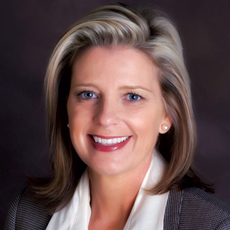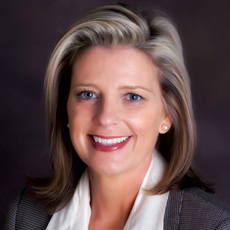
Like it or not, social media is now seen as activity of daily living for your residents and employees. More than 55 million photos a day are uploaded to Instagram and shared.[1] If you thought Facebook was all you had to worry about, think again.
While Generation Xers and baby boomers see Facebook as our “go to” social media, Generation Y and younger citizens see Facebook as outdated and opt instead for Instagram, Twitter, WeChat, and Vine (a video app created by Twitter that allows people to share videos that are 6 seconds or less).[2] Even more troublesome are the new automatically self-destructing apps such as Snapchat — an app that allows people to send a text or photo that automatically self-destructs within 6-10 seconds after the recipient opens the text.[3] These new and changing types of media are making it harder for employers to track or otherwise monitor their employees’ social media use.
Protection of residents’ privacy rights, HIPAA considerations and nursing home malpractice claims pose unique challenges to the long-term care industry.[4] There are certain policies and practices that an employer can put in place to control social media chaos.
1. Draft a policy, mandate training and obtain a signed acknowledgement from each employee stating that he/she understands his/her obligations to keep the residents’ confidential protected health information private, which includes refraining from posting specific status updates, comments, videos and/ or photos that could disclose this information. The policy should warn violations will result in disciplinary action up to and including termination.
2. Warn employees that posting a picture, even without identifying the resident, could violate HIPAA. Posts should never include any health information that could reasonably be used to identify a patient such as a first or last name, age, photo, locations, unique health conditions or any other personal or identifiable patient health or financial information.
3. Training should also include a suggestion (not a requirement) that employees refrain from “friending” residents, clients or residents’ family members.
4. Remind employees that any postings may become public as they cannot control the dissemination after something has been posted on the Internet.
5. Advise employees that the company’s confidentiality and nondisclosure agreement or policy extend to social media in that they are not to disclose confidential, proprietary, trademarked or other non-public information. Advise employees that they do not have permission to use the company’s logo, graphics, trademarks, trade names or corporate slogans when posting online or elsewhere.
6. Require employees who identify themselves as employees of your facility to include a disclaimer on their social media page that states that any postings are their sole opinion and not the opinion of the facility where they are employed.
7. Remind employees that they have no expectation of privacy in information sent over company email, Internet or phones. Whatever they upload, download or send could become evidence in a lawsuit. For example, in response to a recent survey, 20% of employers indicated that in 2013, they had to collect data from an employee’s social media because of a dispute or an investigation.[5]
8. Advise employees that harassing, discriminatory or defamatory conduct involving coworkers, residents’ family members, residents, vendors or any other person associated with the facility will not be tolerated regardless of whether it is spoken, in print or posted online. Disciplinary actions noted in the company anti-harassment or discrimination policy apply to all social media.[6]
9. Do not ask a job applicant for his or her user IDs and passwords for social media websites.[7]
10. Remind employees that the company, like anyone else, may monitor blogs or other electronic media. If the employee fails to abide by the above guidelines or the company’s other policies while online, the employee may be subject to legal or disciplinary action by the company up to and including termination.
 Angie Davis is a shareholder in the Memphis, TN, office of Baker Donelson. Her practice focuses on advice and defense of employers in all aspects of employment law. She has substantial experience handling employment issues in the long term care industry. She can be reached at [email protected].
Angie Davis is a shareholder in the Memphis, TN, office of Baker Donelson. Her practice focuses on advice and defense of employers in all aspects of employment law. She has substantial experience handling employment issues in the long term care industry. She can be reached at [email protected].
 Steven Fulgham is an associate in Baker Donelson’s Memphis, TN, office. As a member of the Firm’s Advocacy Department, he assists clients in various general business-related litigation matters. He can be reached at [email protected].
Steven Fulgham is an associate in Baker Donelson’s Memphis, TN, office. As a member of the Firm’s Advocacy Department, he assists clients in various general business-related litigation matters. He can be reached at [email protected].
[1] Daniel A. Schwartz, Social Media 2.0: The Next Generation of Hyperconnectivity, 40 LAW PRAC. 30, # (2014).
[2] Id.
[3] Id.
[4] See, e.g., E.E.O.C. v. HomeNurse, Inc., 2013 WL 5779046, at *2 (N.D. Ga. Sept. 30, 2013) (where an employee of a provider of home care posted a patient’s confidential information on Facebook).
[5] See Stephanie Russell-Kraft, Social Media a Big Headache for More GCs, Law360 (April 15, 2014), http://www.law360.com/articles/527625/print?section=employment.
[6] See, e.g., Miller v. Christus St. Patrick Hosp., 100 So. 3d 404, 409 (La. Ct. App. 2012) (where a hospital employee “made threatening statements about her supervisor on a social media website while she was at work”); see also Sanders v. Christus Santa Rosa PASC, 2014 WL 201071, at *2 (W.D. Tex. Jan. 17, 2014) (where a nurse relied on the fact that a doctor accessed the nurse’s Facebook account and “friended” himself in support of her claim for sexual harassment).
[7] Eric D. Bentley, The Pitfalls of Using Social Media Screening for Job Applicants, 29 A.B.A. J. Lab. & Emp. 1, 2-3, 9-11 (2013).




